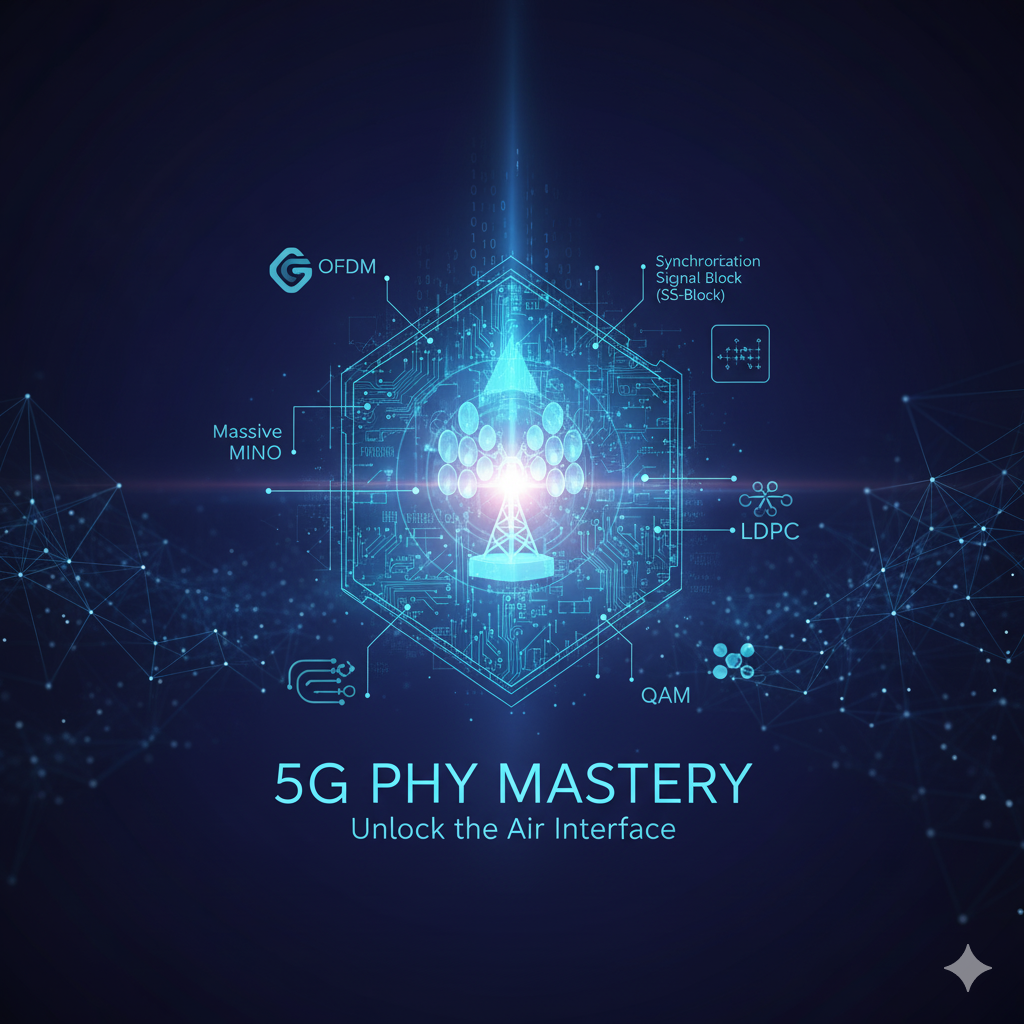What you’ll learn
- History of network evolution (1G, 2G, 3G, 4G and 5G)
- Adaptive Modulation and Coding
5G Frame Structure
OFDM
- Transport Block Size calculation
- Polar and LDPC Coding basics
- PUCCH: Physical Uplink Control Channel (Segmentation, CRC, Polar coding, SBI, Rate Matching, Channel Interleaver, Concatenation, Scrambler, Modulation))
- CORESET: Control Resource Set
- MIMO: Multiple Input and Multiple Output, Concept of Layers and Antenna Ports
- SRS: Sounding Reference Signal
- 5G Standardization Process
- 5G Numerology
- HARQ
- 5G Protocol Stack
- PDSCH: Physical Downlink Shared Channel (Transport Block, Segmentation, CRC, LDPC, Rate Matching, Interleaver, Concatenation, Scrambler, Modulation)
- PDCCH: Physical Downlink Control Channel (CRC Attachement, Channel Coding, Rate matching, Scrambler, Modulation)
- Downlink Control Information and formats
- SVD: Singular Value Decomposition, Concept of Antenna Ports and Number of Layers
- DMRS: Demodulation Reference Signal
- CSI-RS: Channel State Information Reference Signal
Program Curriculum and Components
5G NR Technology
5G PHY Layer Transmitter Chain
PDSCH: Physical Downlink Shared Channel
PDSCH: Physical Downlink Control Channel
CORESET : Control Rescue Set
PUCCH : Physical Uplink Control Channel
MIMO : Multiple Input Multiple Output
5G Reference Signal
DMRS : Demodulation Reference Signal
SRS : Sounding Reference Signal
CSI-RS : Channel State Information Reference Signal
Conclusion

Learning Projects

Modules

Group Learning

Reflective Practice

Career Guidance
Frequently Asked Questions
What is this course about
Unlock the future of wireless technology with this in-depth 5G Physical Layer course! Master cutting-edge concepts like MIMO, channel processing, and 3GPP standards, and get hands-on experience with the technology shaping tomorrow’s networks. Perfect for students, engineers, and professionals eager to excel in the rapidly evolving world of 5G.
What are the prerequisites for this course
Knowledge of the basics of digital communication. All advanced topics are covered from scratch. While not essential, possessing relevant education or work experience can help facilitate a better understanding of difficult concepts.
How is this Course Structured
Duration: 2 Months
5 Live Sessions with the faculty (10 hours plus)
Self Paced Learning Videos
Case Studies & More


